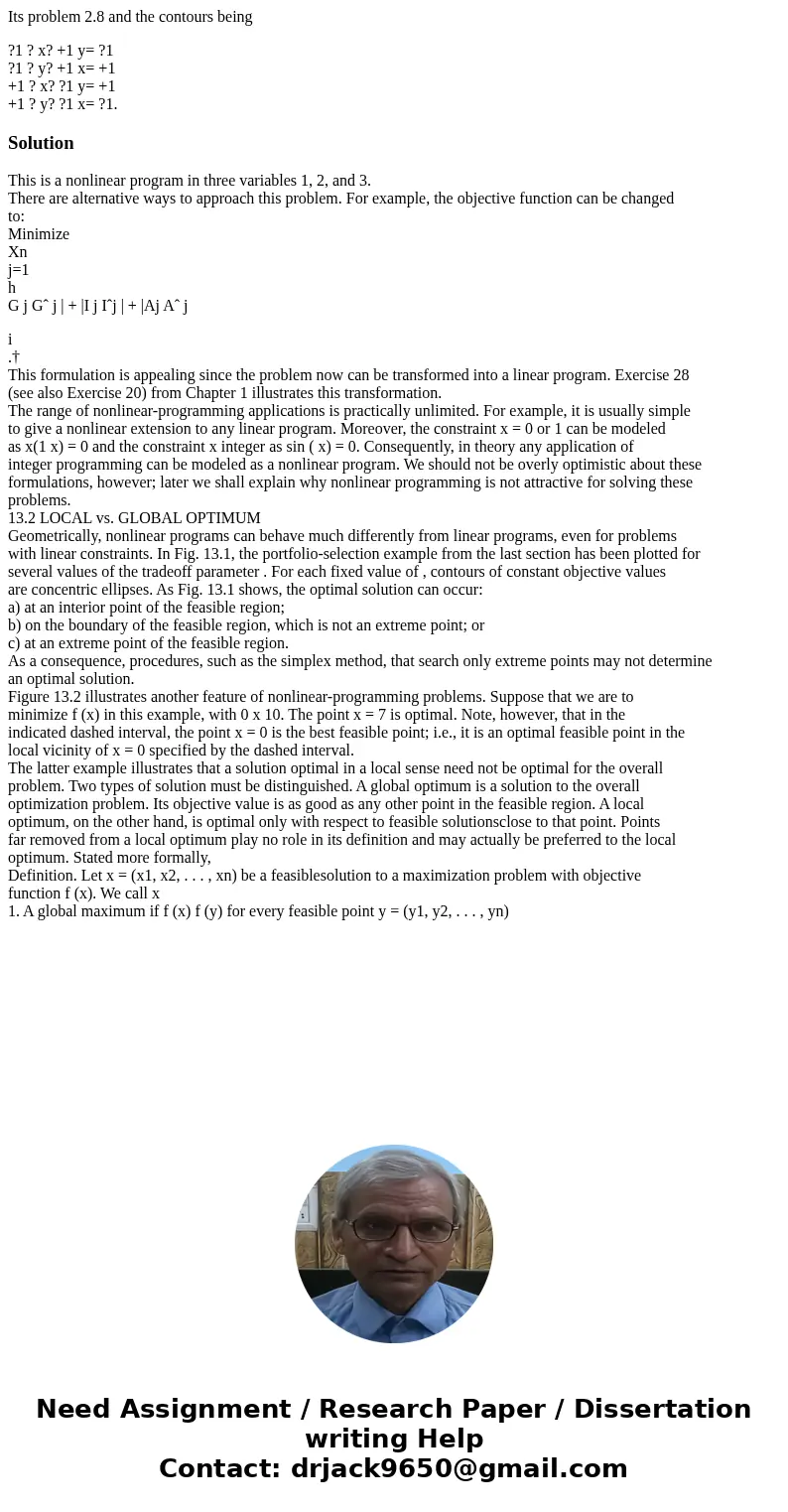Its problem 28 and the contours being 1 x 1 y 1 1 y 1 x 1
Its problem 2.8 and the contours being
?1 ? x? +1 y= ?1
?1 ? y? +1 x= +1
+1 ? x? ?1 y= +1
+1 ? y? ?1 x= ?1.
Solution
This is a nonlinear program in three variables 1, 2, and 3.
There are alternative ways to approach this problem. For example, the objective function can be changed
to:
Minimize
Xn
j=1
h
G j Gˆ j | + |I j Iˆj | + |Aj Aˆ j
i
.†
This formulation is appealing since the problem now can be transformed into a linear program. Exercise 28
(see also Exercise 20) from Chapter 1 illustrates this transformation.
The range of nonlinear-programming applications is practically unlimited. For example, it is usually simple
to give a nonlinear extension to any linear program. Moreover, the constraint x = 0 or 1 can be modeled
as x(1 x) = 0 and the constraint x integer as sin ( x) = 0. Consequently, in theory any application of
integer programming can be modeled as a nonlinear program. We should not be overly optimistic about these
formulations, however; later we shall explain why nonlinear programming is not attractive for solving these
problems.
13.2 LOCAL vs. GLOBAL OPTIMUM
Geometrically, nonlinear programs can behave much differently from linear programs, even for problems
with linear constraints. In Fig. 13.1, the portfolio-selection example from the last section has been plotted for
several values of the tradeoff parameter . For each fixed value of , contours of constant objective values
are concentric ellipses. As Fig. 13.1 shows, the optimal solution can occur:
a) at an interior point of the feasible region;
b) on the boundary of the feasible region, which is not an extreme point; or
c) at an extreme point of the feasible region.
As a consequence, procedures, such as the simplex method, that search only extreme points may not determine
an optimal solution.
Figure 13.2 illustrates another feature of nonlinear-programming problems. Suppose that we are to
minimize f (x) in this example, with 0 x 10. The point x = 7 is optimal. Note, however, that in the
indicated dashed interval, the point x = 0 is the best feasible point; i.e., it is an optimal feasible point in the
local vicinity of x = 0 specified by the dashed interval.
The latter example illustrates that a solution optimal in a local sense need not be optimal for the overall
problem. Two types of solution must be distinguished. A global optimum is a solution to the overall
optimization problem. Its objective value is as good as any other point in the feasible region. A local
optimum, on the other hand, is optimal only with respect to feasible solutionsclose to that point. Points
far removed from a local optimum play no role in its definition and may actually be preferred to the local
optimum. Stated more formally,
Definition. Let x = (x1, x2, . . . , xn) be a feasiblesolution to a maximization problem with objective
function f (x). We call x
1. A global maximum if f (x) f (y) for every feasible point y = (y1, y2, . . . , yn)

 Homework Sourse
Homework Sourse